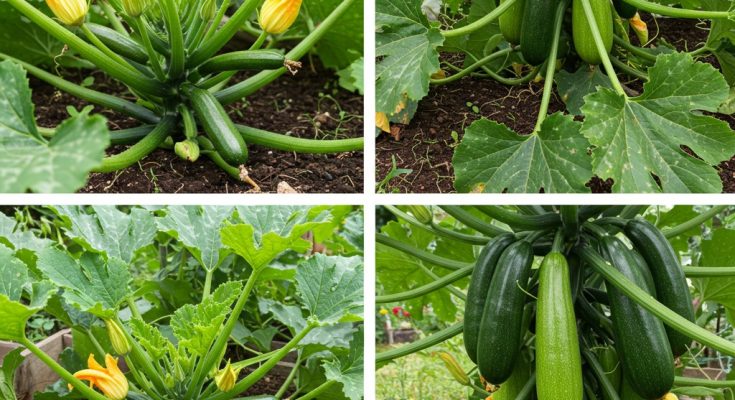Why Zucchini is Perfect for Small-Space Gardening
Zucchini is a fast-growing, high-yield plant that thrives in warm conditions. While the traditional varieties can spread widely, there are compact or bush types that are ideal for container growing. These varieties require minimal space but still produce an abundance of tender fruit throughout the summer.
Whether you’re a beginner or an experienced gardener, zucchini is one of the easiest vegetables to grow in confined areas.
Choosing the Right Variety
When growing zucchini in a small space, variety selection is key. Look for bush or compact varieties that don’t need much room to sprawl. Some good options include:
-
-
Bush Baby
-
-
-
Raven
-
Eight Ball
-
Patio Star
-
Astia
-
These types grow neatly in containers and produce just as well as their larger counterparts.
Selecting the Best Container
Zucchini plants need space for their roots to grow deep and wide. Choose a container that is at least 12–16 inches deep and 16–20 inches wide. Ensure it has multiple drainage holes to prevent water from sitting at the bottom, which can lead to root rot.
Materials like plastic, clay, or fabric grow bags work well. If you’re using a lightweight container, consider placing a few stones at the bottom to stabilize it, especially as the plant becomes top-heavy when fruiting.
Soil and Planting Tips
Use a high-quality, organic potting mix that retains moisture but drains well. Avoid using plain garden soil, which is often too dense for containers. Mix in compost or aged manure to provide essential nutrients from the start.
Plant one zucchini seedling or seed per container. If you’re planting seeds directly, sow them 1 inch deep and keep the soil consistently moist. Place the container in a sunny spot—zucchini needs at least 6 to 8 hours of sunlight per day to produce well.
Watering and Feeding
Zucchini plants are thirsty, especially when grown in containers. Check the soil daily, and water whenever the top inch feels dry. Be sure to water thoroughly, allowing moisture to reach the deeper roots. However, avoid overwatering, as soggy soil can cause fungal issues.
Container-grown zucchini also benefits from regular feeding. Use a balanced, slow-release fertilizer at planting time, and supplement every 2–3 weeks with a liquid fertilizer high in potassium and phosphorus once the plant starts flowering.
Supporting the Plant
Although bush varieties don’t require as much support as vining types, adding a small tomato cage or stake can help keep the plant upright and improve airflow around the leaves. This reduces the risk of disease and makes harvesting easier.
In very tight spaces, consider training the plant upward using a vertical trellis or mesh. Just be sure to secure the stems gently and support the fruit as it grows.
Pollination Indoors and Outdoors
Zucchini plants produce both male and female flowers, and pollination is essential for fruit development. Outdoors, bees and other pollinators usually handle this naturally. If you’re growing zucchini indoors or in a space with few pollinators, you may need to hand-pollinate.
To do this, use a small brush or cotton swab to transfer pollen from the male flower (which has a thin stem) to the female flower (which has a small swollen base). This simple step ensures healthy fruit production even without garden visitors.
Harvesting Zucchini
Zucchini grows quickly once it starts producing. Harvest the fruits when they are 6 to 8 inches long for the best texture and flavor. Use scissors or a sharp knife to cut the fruit cleanly from the stem, avoiding damage to the plant.
Check the plant daily—zucchini can go from perfect to oversized in just a day or two. Smaller fruits are more tender and flavorful, and regular harvesting encourages more production.
Keeping the Plant Healthy
Good airflow, regular pruning of large or damaged leaves, and avoiding water on the foliage will help prevent common problems like powdery mildew. If you notice yellowing leaves or signs of pests like aphids, treat them early with neem oil or insecticidal soap.
Mulching the top of the container with straw or shredded leaves can help retain moisture and reduce temperature swings in the soil.
Final Thoughts
Growing zucchini in small spaces is not only possible—it’s incredibly rewarding. With minimal effort and space, you can enjoy a bounty of fresh, tasty zucchinis all season long. Whether you’re gardening on a balcony or windowsill, container-grown zucchini offers a simple way to bring fresh produce into your home.
With the right variety, a sunny spot, and regular care, you’ll be harvesting your own zucchini in no time—even if you’re short on space.
